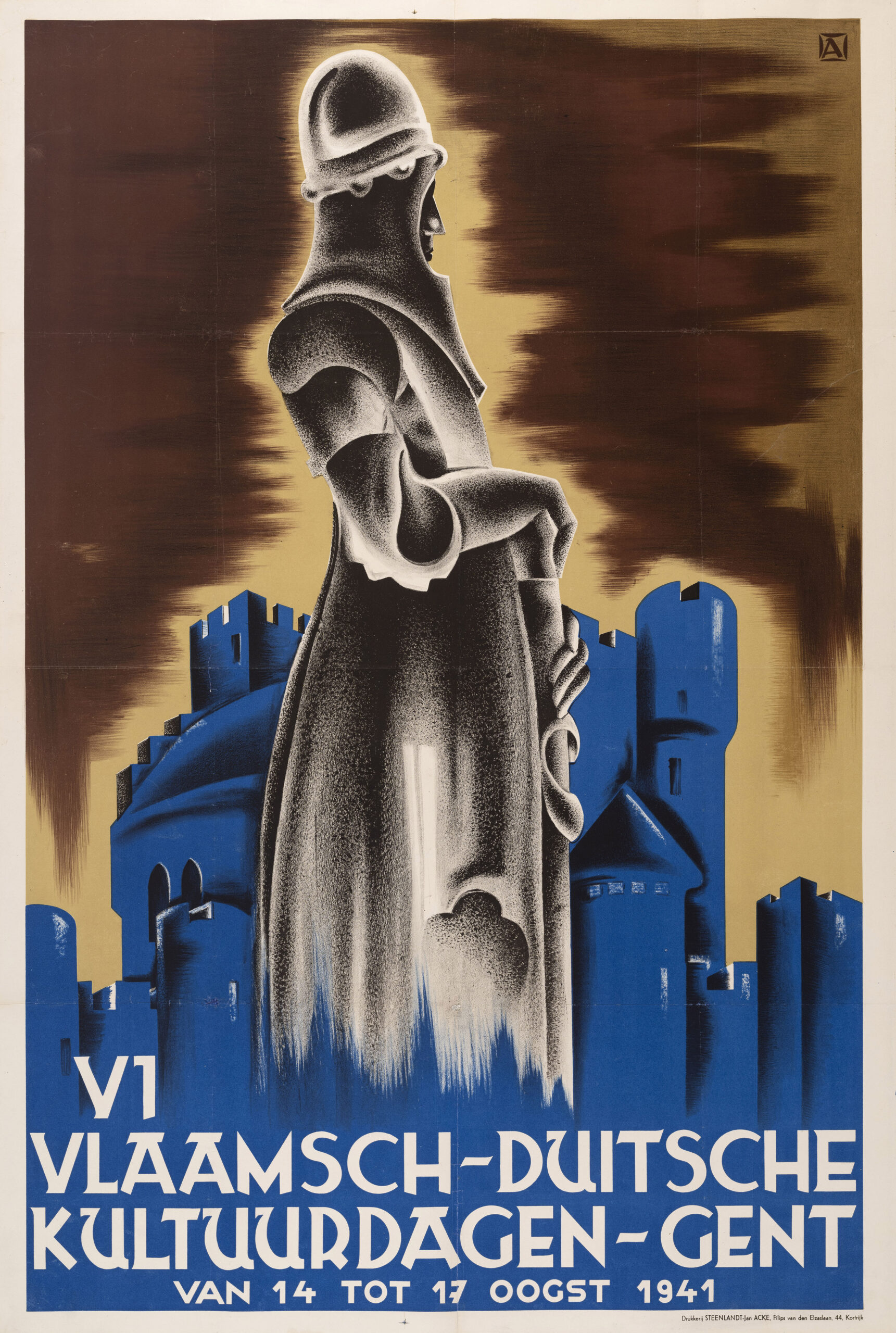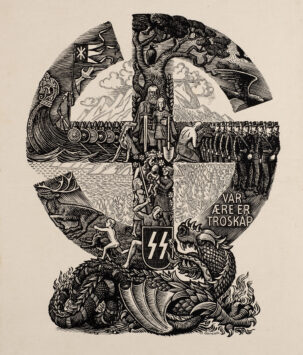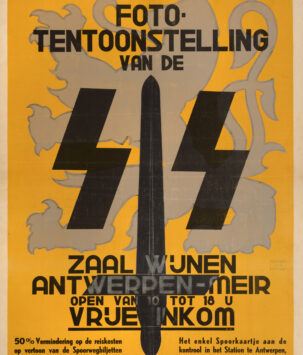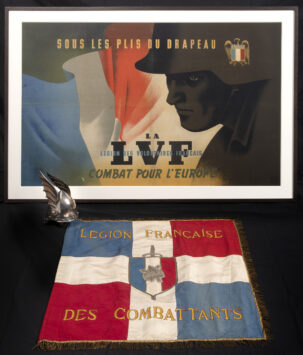Flemish-German Culture Days – Ghent
Poster advertising a Flemish-German cultural exchange held in Ghent from the 14th to the 17th of August, 1941. The figure of a medieval knight can be seen guarding the Gravensteen, a castle in Ghent dating back to 1180.
The nations of Germany and Flanders have had a long and intertwining history. During the Middle Ages, Flanders was a fief of the Holy Roman Empire, the medieval precursor to the modern German state. The Count of Flanders was considered a loyal vassal of the Holy Roman Emperor during this period, and the Germans sought to revive these historical sympathies towards the so-called ‘First Reich’ as the region fell under the Third Reich’s dominion in 1940. As fellow Germanics, the civilian population in Flanders were treated well by the occupation authorities, which in turn served to strengthen German support within the Flemish.
The frequent medievalist motifs employed in propaganda posters from German-occupied Flanders can be interpreted as allusions to earlier times of Germanic feudal kinship, while the imagery pays homage to the Flemish knights of the time, considered some of the best and well-respected knights within Europe during the High Middle Ages (Harl, 2023). The Flemish volunteers who subsequently fought alongside the Germans on the Eastern Front would prove themselves to be loyal and formidable soldiers, worthy of their knightly heritage. Hitler is said to have stated of the Flemish that they “have indeed shown themselves on the Eastern Front to be more pro-German and more ruthless than the Dutch legionaries” referring to the performance of Flemish Waffen-SS volunteer forces on the Eastern Front.
Sources:
Harl, K. W. (2023). Empires of the Steppes: A History of the Nomadic Tribes Who Shaped Civilization. United States: Hanover Square Press. pp. 263, 516.
Free shipping on orders over $50!
- Satisfaction Guaranteed
- No Hassle Refunds
- Secure Payments
Poster advertising a Flemish-German cultural exchange held in Ghent from the 14th to the 17th of August, 1941. The figure of a medieval knight can be seen guarding the Gravensteen, a castle in Ghent dating back to 1180.
The nations of Germany and Flanders have had a long and intertwining history. During the Middle Ages, Flanders was a fief of the Holy Roman Empire, the medieval precursor to the modern German state. The Count of Flanders was considered a loyal vassal of the Holy Roman Emperor during this period, and the Germans sought to revive these historical sympathies towards the so-called ‘First Reich’ as the region fell under the Third Reich’s dominion in 1940. As fellow Germanics, the civilian population in Flanders were treated well by the occupation authorities, which in turn served to strengthen German support within the Flemish.
The frequent medievalist motifs employed in propaganda posters from German-occupied Flanders can be interpreted as allusions to earlier times of Germanic feudal kinship, while the imagery pays homage to the Flemish knights of the time, considered some of the best and well-respected knights within Europe during the High Middle Ages (Harl, 2023). The Flemish volunteers who subsequently fought alongside the Germans on the Eastern Front would prove themselves to be loyal and formidable soldiers, worthy of their knightly heritage. Hitler is said to have stated of the Flemish that they “have indeed shown themselves on the Eastern Front to be more pro-German and more ruthless than the Dutch legionaries” referring to the performance of Flemish Waffen-SS volunteer forces on the Eastern Front.
Sources:
Harl, K. W. (2023). Empires of the Steppes: A History of the Nomadic Tribes Who Shaped Civilization. United States: Hanover Square Press. pp. 263, 516.




